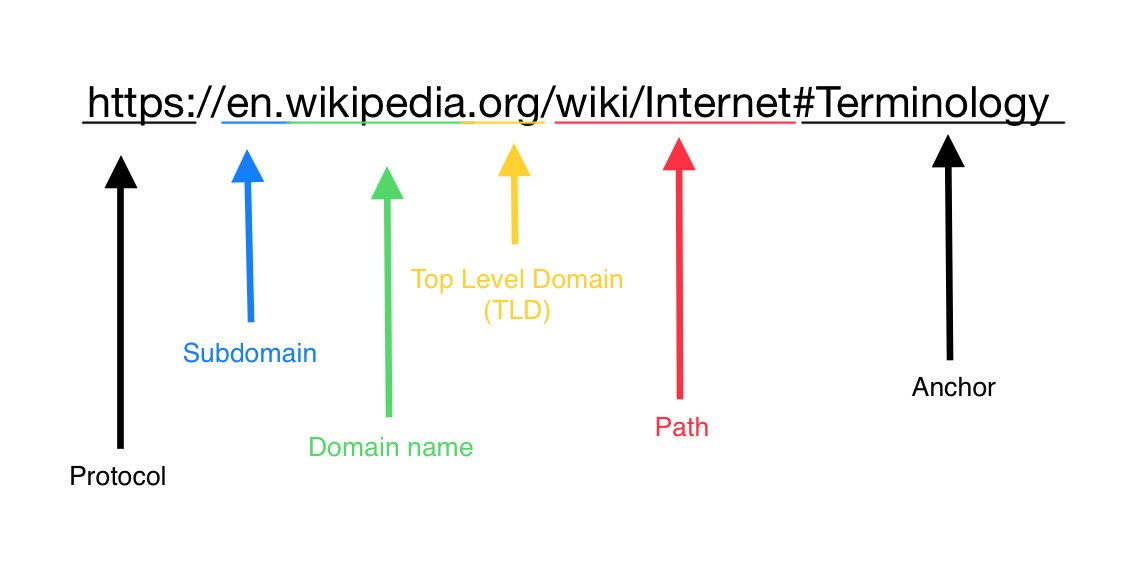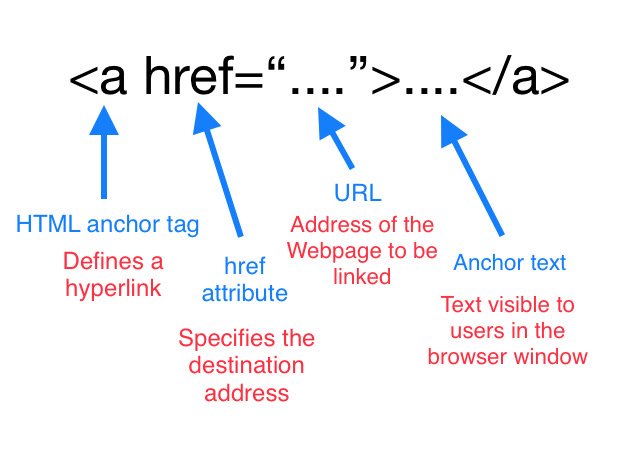In the vast labyrinth of the internet, where websites are interconnected like an intricate web, lies a hidden link that holds immense power – the world of anchor text. As users navigate from one webpage to another, seldom do they realize the vital role that this unassuming yet formidable textual tool plays in shaping their online experience. It is a link that binds articles, blogs, and websites together with invisible threads, guiding us effortlessly from one digital realm to another. While often overshadowed by dazzling graphics and captivating content, the significance of anchor text within internal connections is a silent force quietly shaping the way we explore the online realm. In this article, we will embark on a revealing journey to uncover the secrets of anchor text, unearthing its power and exploring the role it plays in shaping our online navigation. Prepare to plunge into the depths of this hidden link, as we unravel the enigmatic complexities that lie within the realm of anchor text.
Table of Contents
- 1. The Power of Anchor Text: Unlocking the Secrets Behind Internal Links
- 2. Maximizing Internal Linking for SEO Success: Unveiling the Impact of Anchor Text
- 3. Crafting Effective Anchor Text: Strategies for Boosting Internal Connections
- 4. Best Practices for Anchor Text Optimization in Internal Linking
- Q&A
- Key Takeaways

1. The Power of Anchor Text: Unlocking the Secrets Behind Internal Links
Anchor text plays a pivotal role in enhancing the internal connections of a website, yet its true potential often remains hidden. By understanding and harnessing the power of anchor text, you can unlock countless opportunities to improve the visibility and authority of your webpages.
1. Enhancing User Experience: Just like a guiding compass, anchor text directs users to relevant and informative content within your website. By using descriptive and enticing anchor texts, you can entice visitors to explore further, leading to increased engagement and reduced bounce rates. For example, if you have a blog post about “10 Tips for Healthy Eating”, using anchor text such as “Learn these essential tips for a balanced diet” not only guides users to the desired page but also entices them to click with its appealing language.
2. Boosting SEO: Anchor text provides search engines with valuable context about the linked-to page. When search engine bots crawl your website, they consider the anchor text as a clue for understanding the relevance and subject of the linked page. By strategically using keyword-rich anchor texts, you can improve the search engine visibility and ranking of your pages. For instance, if your blog post is about “The Best Digital Marketing Strategies”, using anchor text like “digital marketing strategies” helps search engines understand the topic and increases the likelihood of ranking higher in search results. However, it’s important to strike a balance and avoid excessive use of exact match anchor text, as it can be seen as spammy by search engines. Remember, a varied and natural anchor text profile is key to an effective SEO strategy.
Overall, anchor text serves as a powerful tool in enhancing both user experience and search engine optimization efforts. By paying attention to the quality and relevancy of your anchor texts, you can take your website’s internal connections to new heights, ensuring that both users and search engines are able to navigate your site effortlessly. So next time you’re creating an internal link, don’t underestimate the hidden potential of anchor text – it might just be the missing link in your website’s success.
2. Maximizing Internal Linking for SEO Success: Unveiling the Impact of Anchor Text
Anchor text plays a crucial role in maximizing internal linking for SEO success. It acts as a hidden link that connects various pages within a website, enhancing its overall structure and search engine visibility. When used strategically, anchor text can significantly impact your website’s ranking on search engine result pages (SERPs). Let’s delve deeper into the importance and impact of anchor text in boosting your website’s SEO performance.
1. Strong Relevance: Anchor text provides context to search engines about the linked page’s content, allowing them to understand the relevance between different internal pages. By using descriptive anchor text, you can guide both search engines and users to understand the purpose and content of the linked page. For example, instead of using generic terms like “click here,” opt for anchor text that aligns with the linked page, such as “learn more about our content marketing strategies.”
2. Keyword Optimization: Including relevant keywords in your anchor text helps search engines determine the context and relevance of the linked page. By incorporating target keywords naturally within your anchor text, you can improve your website’s visibility for specific search queries. However, ensure that your keyword usage is balanced and non-spammy, as over-optimization can lead to penalties from search engines. For instance, if you own a bakery and want to link to a page about custom birthday cakes, consider using anchor text like “order personalized birthday cakes for your celebrations” to optimize for the keyword “custom birthday cakes.”
Using anchor text effectively is crucial for creating a strong internal linking structure and improving your website’s SEO performance. By focusing on relevance, keyword optimization, and using descriptive anchor text, you can unlock the hidden potential of anchor text and enhance your website’s visibility on the search engines. Remember, every hyperlink within your website presents an opportunity to optimize your anchor text strategically, so seize it wisely!
3. Crafting Effective Anchor Text: Strategies for Boosting Internal Connections
Crafting effective anchor text is a crucial strategy for boosting internal connections on your website. Anchor text refers to the clickable text that is linked to another web page or resource within your site. It not only serves as a guide for search engines to navigate your website effectively but also provides valuable context for users.
To ensure that your anchor text effectively boosts internal connections, consider the following strategies:
1. Be descriptive and relevant: When creating anchor text, choose words or phrases that accurately describe the content users will find upon clicking. For example, instead of using generic phrases like “click here,” use descriptive terms that convey the topic or purpose of the linked page.
2. Optimize for keywords: Incorporating relevant keywords into your anchor text can help search engines understand the content of the linked page. However, be cautious not to overdo it. Use keywords sparingly and naturally to avoid keyword stuffing, which can have a negative impact on your SEO efforts.
3. Diversify your anchor text: While it may be tempting to use the same anchor text throughout your website, diversifying it can contribute to a more dynamic and user-friendly experience. Experiment with variations of your target keywords, synonyms, or even complete phrases to provide different entry points for users to explore your site.
By implementing these strategies, you can leverage the power of anchor text to enhance internal connections, improve user experience, and ultimately boost your website’s visibility and authority. Remember to regularly review and update your anchor text to ensure its continued relevance and effectiveness.
4. Best Practices for Anchor Text Optimization in Internal Linking
Anchor text optimization is a crucial aspect of internal linking that often goes unnoticed by beginners. It serves as the hidden link, connecting different pages of your website seamlessly. But what exactly is anchor text? Imagine it as a signpost that guides both search engines and website visitors to understand the context or topic of the linked page.
To optimize anchor text effectively, here are some best practices to keep in mind:
1. Be descriptive: Make sure your anchor text accurately describes the content of the linked page. Avoid generic phrases like “click here” or “read more.” Instead, use specific keywords or key phrases that provide a clear idea of what the linked page is all about.
2. Keep it concise: Shorter anchor text tends to be more effective and user-friendly. Aim for a length of 3-5 words. Avoid using lengthy sentences or overstuffing keywords, as this can make the link appear spammy and reduce its impact.
3. Use relevant keywords: Incorporate relevant keywords into your anchor text to optimize it for search engines. However, avoid keyword stuffing, which can lead to penalties from search engines.
4. Avoid exact-match repetition: While it’s important to use keywords, avoid excessive repetition or exact-match anchor text across multiple pages. This can raise red flags for search engines and may be viewed as manipulative.
By following these best practices, you can ensure that your internal links are optimized with effective anchor text. Remember, the goal is to make it easy for both search engines and users to navigate your website, creating a seamless and user-friendly experience.
Q&A
Q: What is the article “” all about?
A: This intriguing article delves into the often overlooked world of anchor text and its importance in internal connections.
Q: Why is the link between anchor text and internal connections considered “hidden”?
A: The link is considered hidden because many people fail to recognize the crucial role anchor text plays in creating effective internal connections within website content.
Q: How does anchor text contribute to internal connections?
A: Anchor text acts as a bridge within websites, connecting relevant pages by using hyperlinks. It effectively guides readers to related content, enhancing user experience and providing valuable context.
Q: Can you explain the concept of anchor text?
A: Absolutely! Anchor text refers to the visible and clickable text within a hyperlink. Rather than simply displaying the URL, anchor text provides descriptive words or phrases that entice readers to click, taking them to a specific page.
Q: What are the benefits of using anchor text in internal connections?
A: By incorporating anchor text, websites can improve navigability, increase user engagement, and boost their search engine optimization (SEO) efforts by enhancing the relevance and context of linked content.
Q: How should one choose anchor text for internal linking?
A: It is crucial to select relevant anchor text that accurately describes the linked page. The words or phrases chosen should be concise, informative, and enticing to encourage users to click.
Q: Are there any best practices for implementing anchor text in internal connections?
A: Yes, indeed! It is important to avoid using generic anchor texts like “click here” or “read more.” Instead, opt for specific keywords or engaging phrases that accurately represent the linked content.
Q: How does anchor text affect search engine optimization (SEO)?
A: Anchor text influences SEO by signaling to search engines the content and relevance of the linked page. Well-optimized anchor texts can improve a website’s visibility and ranking in search engine results.
Q: Can incorrect use of anchor text impact a website’s performance?
A: Yes, it can! Misusing or over-optimizing anchor text, such as stuffing keywords or using irrelevant terms, may lead to negative SEO consequences, including potential penalizations from search engines.
Q: Are there any trends or future developments in anchor text and internal connections?
A: As search engines evolve, the understanding and implementation of anchor text may continue to evolve. It is essential for website owners and digital marketers to stay updated on the latest best practices in order to maximize the benefits of anchor text for their internal connections.
To Conclude
In the ever-evolving landscape of digital connections, anchor text emerges as a silent hero, weaving intricate webs within the vast realm of cyberspace. Through its hidden power, anchor text has become the ultimate conduit, leading users on a mesmerizing journey of discovery. In this article, we have embarked on an extraordinary expedition to unveil anchor text’s vital role in internal connections, shedding light on the enigmatic threads that bind the virtual world together.
As we delved into the depths of anchor text, a tapestry of significance unfolded before our eyes. From its humble beginnings as a mere string of characters, anchor text transforms into a captivating force, guiding the curious wanderer from one digital destination to another. With each click, a portal opens, revealing a wealth of information and beckoning us to explore uncharted territories.
Through careful analysis, we navigate the intricate network of internal connections, tracing the hidden paths that anchor text forges. Like a skilled cartographer, we uncover the importance of relevant and descriptive anchor texts, which not only facilitate seamless navigation but also enhance the user’s understanding of the interconnected web pages. The subtlety of anchor text’s influence becomes apparent as it deftly directs attention, urging users to embark on exciting journeys of knowledge.
Yet, in this exploration, we encountered challenges along the way. The delicate balance between overusing anchor text and diluting its impact became evident, highlighting the need for strategic implementation. The tangled webs we wove brought forth the realization that the art of anchor text lies in its harmonious blend within the tapestry of content, offering guidance while ensuring a smooth flow for both user and search engine alike.
As our journey reaches its conclusion, we leave no stone unturned in unraveling the profound significance of anchor text. It is the silent maestro orchestrating the fusion of interconnections, the invisible guide that illuminates the path to discovery. So, let us embrace this hidden link, recognizing its pivotal role in the grand symphony of the digital realm.
As we venture forth, let us remember that within the realm of anchor text lies the power to captivate, inform, and inspire. Through its deft manipulation, internal connections are strengthened, and the infinite expanse of knowledge is effortlessly harnessed. So, dear reader, as you continue your digital expedition, be mindful of the hidden link that lies beneath the surface, for it is within this unassuming anchor text that the true magic of connection resides.

